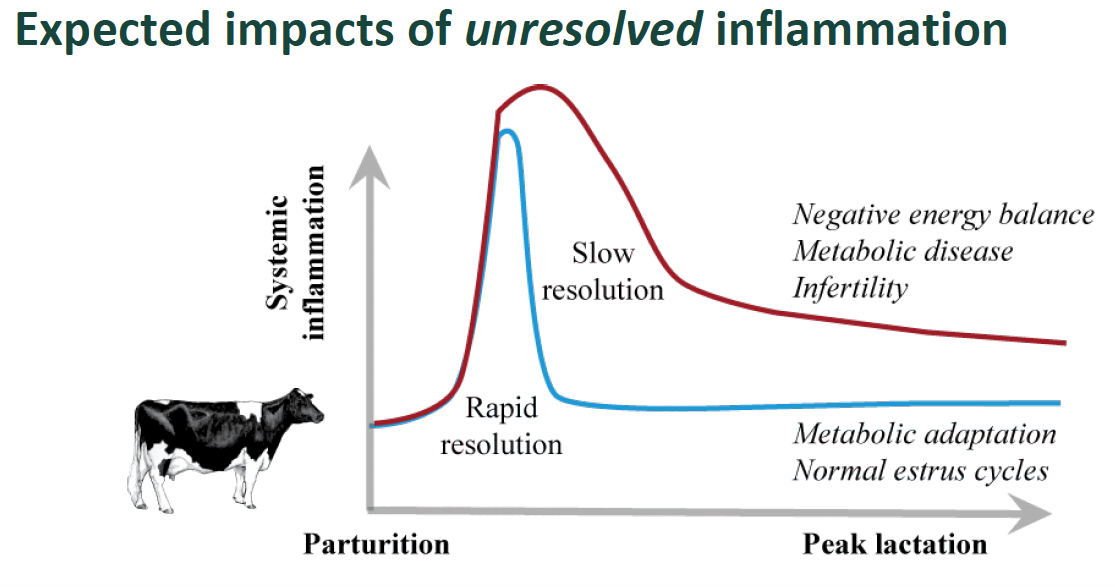Resolving Post-Calving Inflammation ASAP
The Costly Minority:
When Transition Inflammation Does Not Resolve
 Inflammation in the heifer or cow is a natural, vital part of calving. This inflammation ideally resolves within the first few days, allowing lactation to get off to a strong start. But, if transition inflammation persists, it quickly becomes costly, contributing to lost milk production, increased disease, and lower fertility.
Inflammation in the heifer or cow is a natural, vital part of calving. This inflammation ideally resolves within the first few days, allowing lactation to get off to a strong start. But, if transition inflammation persists, it quickly becomes costly, contributing to lost milk production, increased disease, and lower fertility.
Preventing excessive inflammation and minimizing subclinical inflammation is especially challenging because of the inherent links between inflammation and immunity. Simply suppressing inflammation can have unintended health consequences. Also, there are big differences in the incidence of inflammation from herd to herd, where farm management appears to play a large role. Some herds may benefit from dietary immune support while others may respond to anti-inflammatory additives.
Michigan State’s Dr. Barry Bradford points to an ongoing study of up to 40 midsize-to-large Michigan dairy farms, which includes collecting blood samples on-farm during the first week of lactation. Analysis of the blood inflammation marker haptoglobin, produced and released by the liver, indicates the level of inflammatory response.
“We don’t yet have evidence detailing factors at a farm level associated with greater or lesser transition cow inflammation,” Bradford says. “However, data from this study already confirm that the vast majority of cows show a huge drop in blood inflammation markers by days 5 – 7 post-calving.
“We can speculate that cows that do not show rapid resolution of inflammation after calving — a minority in the herd — may be associated with less successful transition programs.”
Costly minority
It’s probably not surprising, Bradford adds, that first-lactation cows, on average, have haptoglobin concentrations more than twice that of multiparous cows. As yet, however, for both first-parity and multiparous animals, it’s not practical to identify cows with excessive inflammation and intervene individually.
“Nonetheless,” Bradford says, “there may be ways that we can support the resolution process in all cows. At the herd level, there is evidence that some feed additives can reduce some signs of inflammation in transition cows.”
Addressing transition inflammation
To address inflammation in early lactation, he points to research on diets using:
- 4% calcium salts of fatty acids with varying ratios of omega-6:omega-3
- 5% omega-3 (calcium salts of fish oil) during breeding
- Chinese skullcap (Scutellaria baicalensis) extracts (bioflavonoids baicalin and wogonin), which resulted in a 13% improvement in whole-lactation milk yield and decreased somatic cell counts
Bradford notes that benchmarks for transition cow inflammation are a work in progress, but suggests that more than 10% of cows above 1.5 g/L haptoglobin amounts to an “alarm level.”
So, cow-per-day cost for anti-inflammatory additives may seem expensive, but, when target-fed for transition, the cost may be in line with other transition diet treatments.
Questions?
Email FeedInsight 4U

